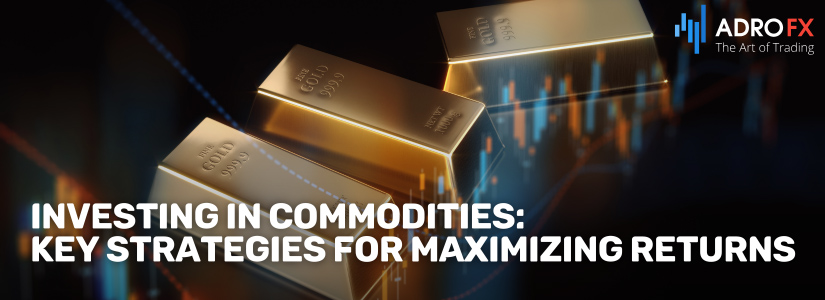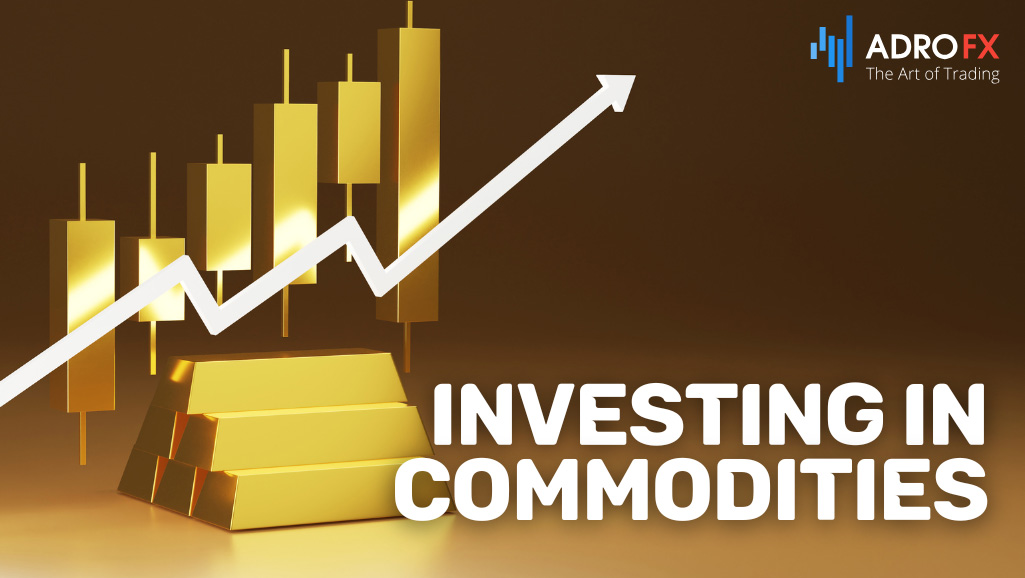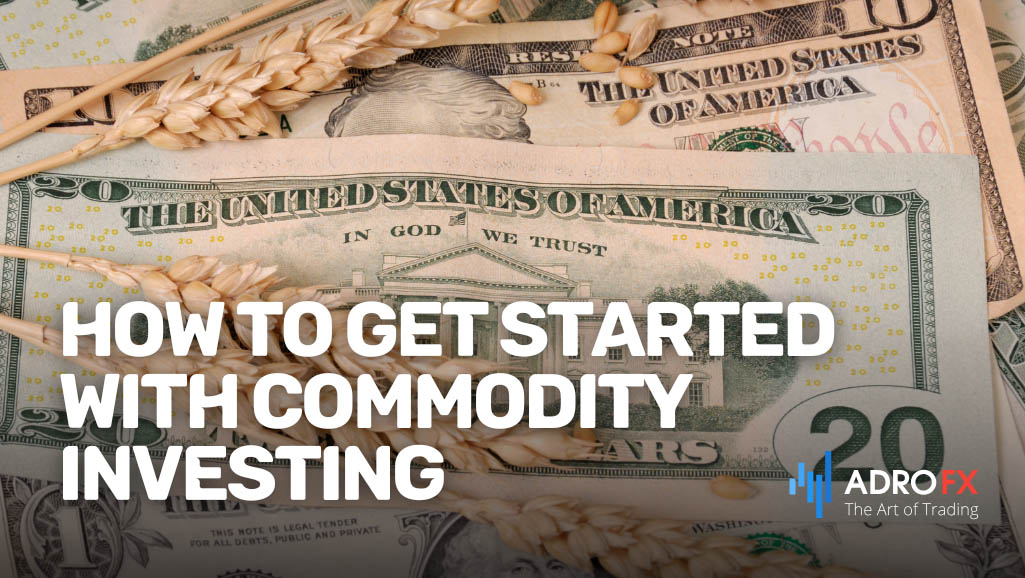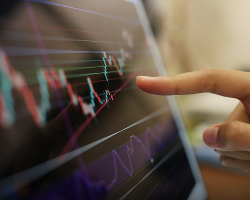Investing in Commodities: Key Strategies for Maximizing Returns

When it comes to building a well-rounded investment portfolio, commodities play an essential role in providing balance and diversification. Commodities are raw materials or primary agricultural products, such as oil, gold, and wheat, that are traded in markets around the world. They offer unique opportunities for investors, particularly because they tend to move independently of stocks and bonds. This makes commodities a valuable hedge against inflation and a buffer during times of market volatility.
Investing in commodities can be a smart move for those looking to diversify their assets and protect against economic downturns. As global demand for resources fluctuates, commodities offer a chance to capitalize on supply-demand dynamics, making them an attractive addition to any investment strategy.
What Are Commodities?
Commodities are fundamental raw materials used in the production of goods and services, making them a cornerstone of the global economy. These physical assets can be bought, sold, or traded, with their value directly influenced by supply and demand forces. Unlike stocks or bonds, which represent ownership in a company or a debt obligation, commodities are tangible assets, ranging from energy sources to agricultural products.

The appeal of commodities as an investment lies in their ability to act as both a hedge against inflation and a tool for portfolio diversification. Commodities often behave differently from traditional asset classes like stocks and bonds, providing protection during periods of economic uncertainty or rising prices. In fact, when inflation increases, the cost of goods typically rises, and commodity prices often follow suit, preserving purchasing power for investors who hold these assets.
Types of Commodities
Commodities are generally categorized into two main types: hard commodities (energy resources like oil and natural gas, as well as metals such as gold, silver, copper, and platinum) and soft commodities (wheat, corn, soybeans, coffee, cotton, sugar, and livestock like cattle and hogs).
By incorporating both hard and soft commodities into a broader investment strategy, investors can benefit from diversified exposure to global markets. Whether it's the price of crude oil rising due to geopolitical tensions or coffee prices spiking after a poor harvest season, the dynamics of the commodity market offer a unique and often profitable opportunity for those willing to understand and navigate these sectors.
Types of Commodity Investments
Investing in commodities offers several avenues for investors, each with its unique characteristics and risk profiles. Whether you want to buy physical assets or take advantage of price movements in the market, here are some of the most popular commodity investment options:
Direct Purchase
For those who prefer owning the physical asset, direct purchase is an option. This typically involves buying commodities like gold, silver, or precious metals in the form of bullion, coins, or bars. Investors favor this method because they have tangible assets they can store and sell at a later time when prices appreciate. While this approach provides a hedge against inflation and currency devaluation, it comes with storage and security costs, which can be considerable for larger investments.
Futures Contracts
Futures contracts are a popular way to invest in commodities, especially for those looking to speculate on price movements without owning the actual commodity. A futures contract is an agreement to buy or sell a specific amount of a commodity at a predetermined price on a future date. These contracts are typically traded on regulated exchanges like the Chicago Mercantile Exchange (CME). Futures are highly leveraged, which means investors can control large quantities of a commodity with a relatively small amount of capital. However, they also carry significant risks, as small price changes can lead to large gains or losses.
Futures trading requires a deep understanding of market dynamics and commodity price fluctuations, making it best suited for experienced investors.
Commodity ETFs
Commodity ETFs are investment funds that track the price of a single commodity or a basket of commodities. These funds allow investors to gain exposure to commodities without having to buy and store physical assets or manage futures contracts. For example, an oil ETF will track the price of oil, while a gold ETF will mimic the performance of gold. ETFs are widely available, traded on major stock exchanges, and offer liquidity and diversification within the commodity markets. They are a more passive investment option, ideal for those looking to minimize risk.
Commodity Stocks
Rather than investing in commodities directly, another option is to buy stocks in companies engaged in commodity production. For example, you can invest in oil companies, mining firms, or agricultural businesses. The performance of these stocks is often linked to the price of the underlying commodity, which means that when commodity prices rise, these companies may see increased profits, benefiting shareholders. This method allows investors to participate in the commodity markets indirectly while also receiving dividends and benefiting from company growth.
Contracts for Difference (CFDs)
Contracts for Difference (CFDs) allow traders to speculate on the price movements of commodities without actually owning the underlying asset. With CFDs, you can enter long or short positions, giving you the flexibility to profit from both rising and falling markets. This makes CFDs a popular choice for active traders looking to capitalize on short-term price fluctuations. Trading CFDs with platforms like AdroFx provides access to a wide range of commodity markets, enabling traders to leverage their positions and maximize potential returns. However, CFDs are leveraged products and can magnify both gains and losses, so it's important to manage risk carefully.
Also read: Geopolitical Risks in Forex Trading: Mitigating the Impact of Global Uncertainties
Advantages of Investing in Commodities
Commodities play a vital role in many investment portfolios, offering unique advantages that can enhance overall returns and reduce risk. Here are the key benefits of investing in commodities:
Hedge Against Inflation
One of the primary reasons investors turn to commodities is their effectiveness as a hedge against inflation. When inflation rises, the prices of goods and services generally increase, and commodities - being the raw materials that drive these prices - tend to follow suit. For example, as inflation pushes up the price of oil, the value of oil as a commodity rises, protecting investors from the diminishing purchasing power of cash or fixed-income assets. Gold is a well-known inflation hedge, often rising in value when the cost of living increases or when currency values weaken.
Portfolio Diversification
Commodities offer portfolio diversification because they typically have a low or negative correlation with traditional asset classes such as stocks and bonds. This means that when stocks decline due to market downturns or economic stress, commodities may move in the opposite direction, helping to stabilize your portfolio. For example, during periods of high volatility in equity markets, precious metals like gold often see increased demand as investors seek safe-haven assets, balancing out losses in other areas of the portfolio.

Diversifying your investments across commodities can help reduce overall portfolio risk by providing exposure to a different set of market drivers. This diversification is particularly useful in reducing the impact of market-specific events that might affect stocks or bonds but leave commodities unaffected.
Performance in Different Market Cycles
Commodities tend to perform well during specific phases of the economic cycle, making them a valuable addition to long-term investment strategies. During periods of economic expansion, industrial commodities like oil, copper, and natural gas typically rise in value due to increased demand for energy and raw materials. On the other hand, in times of market uncertainty or geopolitical tensions, precious metals such as gold and silver often rally as investors seek to protect their wealth.
By including commodities in a portfolio, investors can take advantage of these cyclical trends, capitalizing on rising demand during economic booms while mitigating losses during downturns.
Supply and Demand Dynamics
Commodity prices are heavily influenced by the basic principle of supply and demand. For instance, a supply shortage due to geopolitical conflicts, extreme weather, or trade restrictions can lead to a significant spike in commodity prices. On the other hand, oversupply or reduced demand may lower prices, offering opportunities for value investments. Understanding these dynamics allows investors to make informed decisions and potentially capitalize on market imbalances.
In summary, investing in commodities provides unique advantages, from hedging against inflation to diversifying portfolios. Their ability to perform across various market cycles makes them an essential consideration for any investor looking to safeguard against market volatility and enhance returns.
Also read: The Role of Supply and Demand in Commodity Trading
Risks Associated with Commodity Investments
While investing in commodities can offer significant advantages, it also comes with a unique set of risks. Understanding these risks is essential for making informed decisions and managing potential downsides. Below are the most common risks associated with commodity investing:
Price Volatility
One of the biggest risks in commodity investing is price volatility. Commodities can experience dramatic price swings due to a variety of factors, including market speculation, economic conditions, and sudden shifts in supply and demand. For example, crude oil prices can spike or plummet based on geopolitical tensions or changes in production levels by major oil-producing nations. Volatile commodities such as oil, natural gas, and agricultural products are particularly sensitive to sudden changes, making them risky for investors who are not prepared for sharp price fluctuations.
Geopolitical Events
Geopolitical events can have a significant impact on commodity prices. Conflicts in oil-rich regions, trade wars, or government interventions can lead to supply disruptions, affecting the price and availability of commodities. For instance, sanctions on a major oil-exporting country can reduce global supply, driving up prices. Geopolitical risks are especially prevalent in energy markets but can also affect agricultural and industrial commodities.
Supply-Demand Imbalances
Commodity markets are driven by the basic forces of supply and demand. When supply exceeds demand, prices tend to fall, while shortages can lead to price surges. These imbalances are often caused by factors beyond an investor's control, such as droughts, natural disasters, or changes in consumer preferences. For example, poor harvests due to adverse weather conditions can cause agricultural commodity prices to soar, while oversupply from technological advancements or increased production can push prices down.
Environmental Factors
Environmental factors play a significant role in the commodity markets, particularly in agriculture and energy. Droughts, floods, hurricanes, and other natural disasters can disrupt the supply of raw materials like wheat, coffee, or oil, leading to sharp price increases. Similarly, climate change and environmental regulations can affect the long-term viability of certain commodities, especially fossil fuels. These factors can introduce uncertainty, making commodities highly unpredictable.
In summary, while commodities can be a valuable addition to your portfolio, they come with risks that should not be overlooked. Price volatility, geopolitical events, supply-demand imbalances, and environmental factors all contribute to the unpredictability of commodity investments.

How to Get Started with Commodity Investing
If you're interested in adding commodities to your investment portfolio, it's essential to approach this asset class with a clear strategy and understanding of your risk tolerance. Here's a step-by-step guide to help you get started with commodity investing:
Assess Your Risk Tolerance
Before diving into the commodity markets, it's crucial to evaluate your risk tolerance. Commodities are known for their volatility, and not all investors are comfortable with the price swings often seen in markets like oil or natural gas. If you're a conservative investor, you might want to focus on less volatile commodities like gold or diversify by investing in commodity-focused ETFs. On the other hand, if you're comfortable with higher risk, you could explore more volatile markets, such as agricultural commodities or energy.
Choose the Right Commodity
The next step is to select the commodity that best fits your investment goals. It's essential to research the market dynamics of the commodity you're interested in. For example, investing in gold might be a good hedge against inflation, while crude oil can provide exposure to global economic growth.
Select the Best Investment Method
Once you've chosen the commodity, you need to decide how you want to invest in it. There are several ways to get exposure to commodities:
- Direct Purchase: Buy physical assets such as gold or silver.
- Futures Contracts: Speculate on the future price of commodities, which can be risky but profitable for experienced investors.
- Commodity ETFs: Exchange-traded funds that track the price of a commodity or a basket of commodities, offering a more diversified and lower-risk approach.
- Commodity Stocks: Invest in companies that are involved in the production and distribution of commodities (e.g., oil companies, mining firms).
- CFDs (Contracts for Difference): Trade commodity price movements without owning the underlying asset. This method is more suited for short-term trading and allows for leverage.
Start Trading CFDs with AdroFx
If you're looking for a flexible and leveraged way to invest in commodities, trading CFDs (Contracts for Difference) could be a suitable option. With AdroFx, you can start trading CFDs on various commodities, including oil, gold, and silver, without actually owning the asset. This allows you to profit from both rising and falling markets by going long or short, providing opportunities in both bullish and bearish conditions.
To get started with CFD trading on AdroFx:
- Sign up for a trading account: Create an account on the AdroFx platform and complete the registration process.
- Fund your account: Deposit the necessary funds to begin trading. Make sure to start with a comfortable amount, considering your risk tolerance.
- Choose your commodity: Select the commodity you'd like to trade, such as oil or gold, and decide whether to go long or short based on your market analysis.
- Leverage your position: CFDs allow you to use leverage, meaning you can control a larger position with a smaller initial investment. However, remember that leverage magnifies both gains and losses, so it's essential to use it wisely.
Trading CFDs with AdroFx gives you access to global commodity markets with the flexibility to trade based on short-term price movements, making it a popular choice for active traders.
Commodity Market Trends to Watch in 2024 and Beyond
The commodity markets are continuously evolving, influenced by global economic, environmental, and technological shifts. As we look to 2024 and beyond, several key trends are expected to shape the future of commodities investing:
The Impact of Green Energy on Oil
The growing transition toward green energy is expected to have a significant impact on traditional fossil fuels like oil. As more countries commit to reducing carbon emissions and investing in renewable energy sources, the demand for oil could see a gradual decline. However, while the shift to clean energy may eventually reduce global oil consumption, the commodity price forecast for oil remains uncertain in the near term due to continued reliance on it, particularly in developing nations.
The Role of Commodities in Emerging Markets
Emerging markets play a crucial role in the global demand for commodities. Countries like China and India, which are undergoing rapid industrialization and urbanization, will continue to drive the demand for industrial metals like copper, aluminum, and steel. These commodities are essential for infrastructure projects, housing, and technology manufacturing. Investors should watch for opportunities in emerging markets, which are expected to contribute significantly to commodity market trends over the next decade.
Growing Demand for Renewable Commodities
As sustainability and environmental concerns rise, there is increasing interest in renewable commodities like lithium, cobalt, and rare earth elements, which are essential for the production of electric vehicles (EVs) and renewable energy technologies. The demand for these commodities is likely to increase as the world moves toward green energy solutions, making them attractive options for long-term investors. These materials are vital for the production of batteries, solar panels, and wind turbines, aligning with the future of commodities investing in a decarbonized world.
Keeping an eye on these commodity market trends can help investors stay ahead of the curve and capitalize on emerging opportunities.
Also read: Is Gold Investment Right for You? A Deep Dive into Factors and Strategies
Final Thoughts: Is Commodity Investing Right for You?
Investing in commodities can be a powerful way to diversify your portfolio and protect against inflation, but it’s important to recognize that this asset class is not for everyone. Whether or not commodity investing is right for you depends largely on your financial goals, risk tolerance, and overall investment strategy.
If you're looking for high growth and are comfortable with price volatility, commodities may offer lucrative opportunities, especially in emerging markets or during periods of economic instability. However, if you prefer stable, income-generating assets with lower risk, commodities may not align with your financial goals. A well-balanced commodity investing strategy should consider both the advantages and risks, such as market fluctuations and geopolitical influences.
In 2024 and beyond, the future of commodities investing will likely be influenced by factors like the green energy transition, rising demand in emerging markets, and the role of renewable commodities. Investors who can navigate these trends may find commodities to be a rewarding part of their overall investment portfolio.
Ready to dive deeper into the world of commodity investing? Whether you're just getting started or looking to expand your knowledge, it's crucial to have the right resources at your fingertips. Explore our commodity investment guide and learn how to navigate the complexities of commodity markets. If you're interested in trading with leverage, CFDs on commodities with AdroFx can offer a flexible and dynamic way to capitalize on price movements.
About AdroFx
Established in 2018, AdroFx is known for its high technology and its ability to deliver high-quality brokerage services in more than 200 countries around the world. AdroFx makes every effort to keep its customers satisfied and to meet all the trading needs of any trader. With the five types of trading accounts, we have all it takes to fit any traders` needs and styles. The company provides access to 115+ trading instruments, including currencies, metals, stocks, and cryptocurrencies, which make it possible to make the most out of trading on the financial markets. Considering all the above, AdroFx is the perfect variant for anyone who doesn't settle for less than the best.










